Share a Feast: How Potlucks Build Community and Connection
Let’s Discuss How Sharing Food Nourishes Both Bodies and Bonds Across Generations.
Photo by Jacob McGowin on Unsplash
Potlucks have a long tradition worldwide, as described by Elizabethan playwright Thomas Nashe. He claimed that potlucks are "food provided for an unexpected or uninvited guest—the luck of the pot."
Today, we may instead describe them as communal gatherings of loving-kindness, where guests bring homemade dishes to share. But beneath the surface, potlucks represent something much deeper: a spirit of mutual aid and collective care that has sustained communities across history.
Personal Story
Photo by Joshua Resnick via Shutterstock
Growing up in rural churches, I remember fondly how potlucks brought everyone together. After Sunday service, tables would line the gymnasium walls, loaded with countless casseroles, soups, and desserts. There was always a fresh cup of coffee or tea, and the laughter of friends and family echoed through the space.
Sometimes these gatherings doubled as fundraisers for community needs—whether to help someone repair storm damage to their home or support a young couple adopting a child. We also held chili competitions and spaghetti nights to raise funds for our youth group. Through these events, I saw firsthand how potlucks could sustain not just bodies, but whole communities.
Later, when I lived in Chattanooga, I found a similar camaraderie among local potluck and permaculture friends. Despite the fast pace of modern life, these gatherings reminded me that community and connection still thrive when people come together to share food and friendship. Inspired by those experiences, I decided to host a potluck of my own.
Brief History
The term potluck first appeared in 16th-century England, but the practice of sharing food communally spans cultures worldwide. In the United States, potlucks became popular in rural communities and churches, where they helped feed large gatherings without placing the burden on a single household. During hard times like the Great Depression, these gatherings became essential for stretching limited resources while maintaining social bonds.
Many cultures have their own versions of the potluck:
Indigenous Potlatch Ceremonies (North America): The Indigenous peoples of the Pacific Northwest practiced the potlatch, a ceremonial feast where wealth was redistributed within the community.
Samaras (South Asia): Community feasts in India and Nepal often involve neighbors contributing ingredients or prepared dishes.
Mezze (Middle East) and Tapas (Spain): These traditions of sharing small dishes foster social connection and hospitality.
Bring-and-Share Meals (Global): From Caribbean lime gatherings to Scandinavian knytis, the principle of collective contribution is universal.
Affinity Groups
Photo by Karolina Grabowska via Pexels
Affinity groups—small, self-organized collectives formed around shared interests or political goals—often rely on shared meals to build trust and cohesion. Potlucks provide a space for members to connect beyond their immediate tasks, strengthening the personal bonds that sustain long-term activism. The act of preparing and sharing food fosters a sense of care and reciprocity, reinforcing the group’s commitment to mutual support.
Moreover, potlucks reflect the values that underpin many affinity groups: decentralization, collaboration, and self-reliance. By distributing the responsibility of feeding the group, potlucks embody the principle that collective action is both more sustainable and empowering than relying on a single leader or resource.
Potlucks as Mutual Aid
Photo by Jasper Nance via Flickr
While potlucks are often seen as social gatherings, their significance extends beyond food. At their core, they represent mutual aid—people coming together to support one another without hierarchy or profit. This principle is central to historical and contemporary affinity groups, where food-sharing catalyzes solidarity and resilience.
Civil Rights Movement (United States): During the Civil Rights Movement, church basements often hosted communal meals that sustained activists. Potluck-style gatherings provided nourishment and strengthened the sense of shared purpose, helping sustain long-term organizing efforts.
Queer and Feminist Collectives: In the 1970s and 1980s, queer communities and feminist groups frequently used potlucks as inclusive spaces where individuals could find belonging and support outside mainstream society. Sharing food became a way to create safe, welcoming environments that fostered both social connection and political organizing.
Food Not Bombs (Global): Founded in the 1980s, Food Not Bombs is an international grassroots movement that shares free, plant-based meals as a form of protest against poverty and militarism. Operating on principles of mutual aid, volunteers source surplus food and prepare communal meals, often served in public spaces. Their approach echoes the potluck tradition—feeding both bodies and social movements through collective contribution.
Community Kitchens and Grassroots Mutual Aid Networks: In recent years, grassroots mutual aid networks have revived the potluck spirit to address food insecurity, particularly during crises like the COVID-19 pandemic. Community kitchens, food-sharing networks, and solidarity fridges all operate on the principle that everyone has something to contribute, whether it’s food, labor, or logistical support.
Planning Our Potluck
Image by JM Heatherly via Canva
Several considerations went into planning the event. For one, the pandemic at the time and my lease’s occupancy limit led me to host a small gathering of around ten folks. The guest list included my coworkers, especially those who had helped me move apartments a few months earlier—they deserved the first invites!
Since it was close to Halloween, I chose a Fright Night theme and quickly curated a playlist of holiday hits (feel free to follow it for your future spooky gatherings). We coordinated dishes through group text messages, though I also created a private Facebook event and designed virtual invitations using Canva.
Dietary needs and allergies were important to consider, so I conducted a quick survey and discovered two allergies among potential attendees. With that in mind, I planned the menu to ensure there were options for everyone.
Preparing the Feast
Photo by Africa Studio via Shutterstock
Potlucks are often less structured, with multiple main dishes to choose from. I prepared two hearty entrées, a charcuterie board, and a few desserts to cover all tastes and dietary preferences. Here are the highlights:
Hearty, Low-Heat Chili 🥣
As the weather cools, nothing beats a bowl of chili. I made both beef and meatless versions, using beans to naturally thicken the stew without flour—making it gluten-free. You can get creative with ingredients like corn, chicken, or different spices to personalize your chili.Creamy Potato Soup 🥔
This rich and comforting soup came together with butter, flour, milk, and potatoes. To accommodate different preferences, I offered vegetarian and vegan variations, using full-fat coconut milk and blended cashews for creaminess. Bacon, cheese, sour cream, and sautéed vegetables made perfect garnishes.Charcuterie Board 🧀🥖
Inspired by the French art of charcuterie, I arranged a platter of cured meats, cheeses, nuts, and fresh vegetables—perfect for snackers. I also included plant-based options like roasted broccoli and mixed nuts, ensuring everyone could enjoy this communal centerpiece.Desserts 🍪🍫🍰
While I focused mainly on hearty foods, I couldn’t skip dessert. I whipped up classic chocolate chip cookies, rich brownies, and a creamy cheesecake—simple crowd-pleasers that rounded out the meal.
Festivities and Final Thoughts
Photo by JM Heatherly via Canva
Potlucks have evolved since Thomas Nashe’s time. No longer reserved for unexpected guests, today’s potlucks are intentional gatherings that foster fellowship, camaraderie, and mutual support. They help us navigate hard times, provide safe spaces for vulnerable communities, and remind us that abundance is possible when we share what we have.
From ancient feasts to modern grassroots movements, the potluck and its cultural equivalents have always been more than just meals. They are acts of care, cooperation, and resistance against isolation and scarcity.
Whether feeding activists at a protest, building solidarity within a marginalized community, or simply bringing neighbors together, shared meals remind us that we are strongest when we support one another. In a world increasingly shaped by individualism and inequality, the humble potluck stands as a powerful reminder of the abundance that emerges when we share what we have.
Salud to sustaining this timeless tradition! 🥂
First Published on Medium
Beyond Darwinism - Mutual Aid Index
Beyond Survival of the Fittest: Kropotkin's Vision of Mutual Aid
What is the role of solidarity and reciprocity in building equitable and sustainable communities?
Mutual Aid Among Plants and Animals: Cooperating for Survival
Peter Kropotkin Observes How Cooperation Among Species Improves Survival and Shapes Evolution.
Frolics and Barn-Raisings: Mutual Aid Amongst the Amish
Take a Look at the Amish Traditions of Collective Action and Solidarity.
The Arab Spring: Mutual Aid in the Fight for Freedom
See Solidarity in Action with the Collective Struggle for Liberation in the Arab Spring Movements.
The Black Panther Party’s Legacy of Community Empowerment Through Mutual Aid
The BPP protected and served their communities despite rampant racism and being the main targets of the FBI’s Counter-Intelligence Program.
Blessing Boxes: Mutual Aid in Our Communities Today
Find Out How These Simple Free Community Pantries Transform Neighborhoods and Promote Solidarity.
Childcare Collectives: A Modern Expression of Mutual Aid
Childcare Collectives develop when families, friends, and neighbors pool their resources to raise children.
Feeding Hope: The Impact of Community Fridges as Mutual Aid
See How Grassroots Efforts Like Chattanooga’s Hope Community Fridge Transforms Food Access and Fights Food Apartheid.
Grow Food Together: The Impact of Community Gardening as Mutual Aid
Shared Gardens Enhance Food Security, Build Community Bonds, and Promote Well-being Without Personal Expense.
Community Self-Defense: Protecting Ourselves and One Another
Let’s Talk About How Communities Work Together to Protect Themselves From Harm Inflicted by the State and Fascists.
Community Workspaces: Where Coworking Meets Opportunity
Find Out How Shared Community Workspaces Support Creativity and Mutual Empowerment.
Deciding Together: The Consensus Model in Mutual Aid
How Collective Decision-Making Builds Strong and Resilient Movements As Shown by Occupy Wall Street.
Live Together, Thrive Together: Shared Housing as Mutual Aid
Imagine Housing as a Way to Build Community and Share Resources.
Breaking Bread, Building Bonds: What’s Cooking in Community Kitchens?
Learn How These Shared Kitchens Create Lasting Change Through Healthy Meals, Cooking Education, and Mutual Aid.
Migration and Mutual Aid: Navigating a Climate Crisis Together
The USA and Global North Grew Rich Burning Fossil Fuels. Radical Cooperation Can Help Us Adapt to a Changing World.
Forgive Us Our Debts: How Debt Collective Helps Abolish Financial Servitude
Debt Collective Branched Off From Occupy Wall Street and Unifies Debtors in Mutual Aid for Collective Liberation.
Thou Doth Protest? How The Diggers Reclaimed the Commons and Fought Early Capitalism
Learn About the Radical Solidarity and Resistance to the Enclosure of the Common Lands in 17th-Century England.
A World Without Barriers: Consider Accessibility in Mutual Aid
Everyone Becomes Disabled if They Are Lucky. So How Can We Make Our World More Accessible?
Mutual Aid in the Eye of the Storm: Disaster Relief Amid Climate Change
When Disaster Strikes, Mutual Aid Responds: A Blueprint for Resilience Amid More Frequent Catastrophes
Beyond the Ballot Box: Build Dual Power for Real Change
Empower People Through Mutual Aid, Solidarity, and Community Control.
Communities of Care: How Solidarity Transforms Support for Elders and the Differently-Abled
How Can Mutual Aid Principles Change Elderly and Disabled Care From Isolation to Connection?
Growing Resistance: How Food Forests Feed Communities for Free and Defy Capitalism
From Commodities to Commons: The Radical Potential of Agroforestry
Roots of Resilience: Black Mutual Aid Societies in American History
Explore W.E.B. Du Bois’ Work and the Heritage of Solidarity Among Black Folk.
From Despair to Dignity: The Radical Work of Free Clinics
How Mutual Aid and Community Solidarity Transform Access to Healthcare
Feeding Each Other: The Radical Power of Free Grocery Stores
How This Kind of Mutual Aid Transforms Hunger Relief into Community Empowerment
Challenge Capitalism One Free Store at a Time
How Free Stores Empower Communities and Challenge Scarcity
The Past & Future of Self-Governance: How General Assemblies Build Dual Power
Strengthen Communities Through Direct Democracy and Mutual Aid
Let Joy Guide You: The Power of Fun in Change Work
Explore the Role of Laughter, Creativity, and Connection in Community Organizing
Fascism Unmasked: How to Recognize and Resist Modern Authoritarianism
Empower Your Resistance: A Practical Guide to Revolutionary Optimism, Mutual Aid, and Defying Totalitarians
Resist Burnout: Care, Coping, and Wellness in Dark Times
How can we practice self-care to endure the revolutionary marathon and better support one another?
Resistance Anthems: Protest Music for Hard Times
Let’s Unite Our Voices For Justice Through the Power of Music!
Affinity Groups: Decentralized Resistance in an Age of Crises
How Do Small, Autonomous Collectives Build Power and Resistance Against Fascism, Capitalism, and Collapse?
Share a Feast: How Potlucks Build Community and Connection
Let’s Discuss How Sharing Food Nourishes Both Bodies and Bonds Across Generations.
Notes From the Underground: How Forests Teach Mutual Aid
How Do Fungi, Trees, and Other Plants Thrive Through Cooperation and Reciprocity?
Fight Book Bans with Little Free Libraries
How Do Little Free Libraries Turn the Tide Against Book Bans and Censorship?
Read, Rest, Revolt, Repeat: Study Groups as Mutual Aid
How Does Collective Study Build Power, Sharpen Strategy, and Sustain Movements?
Burn After Reading: Comms Discipline for Mutual Aid and Resistance
Think About Encryption, VPNs, Walkie-Talkies, and the Lost Art of Keeping Your Mouth Shut.

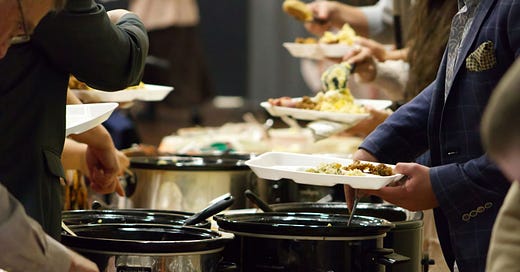



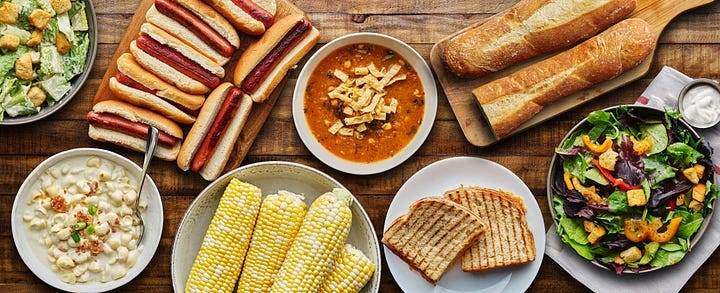
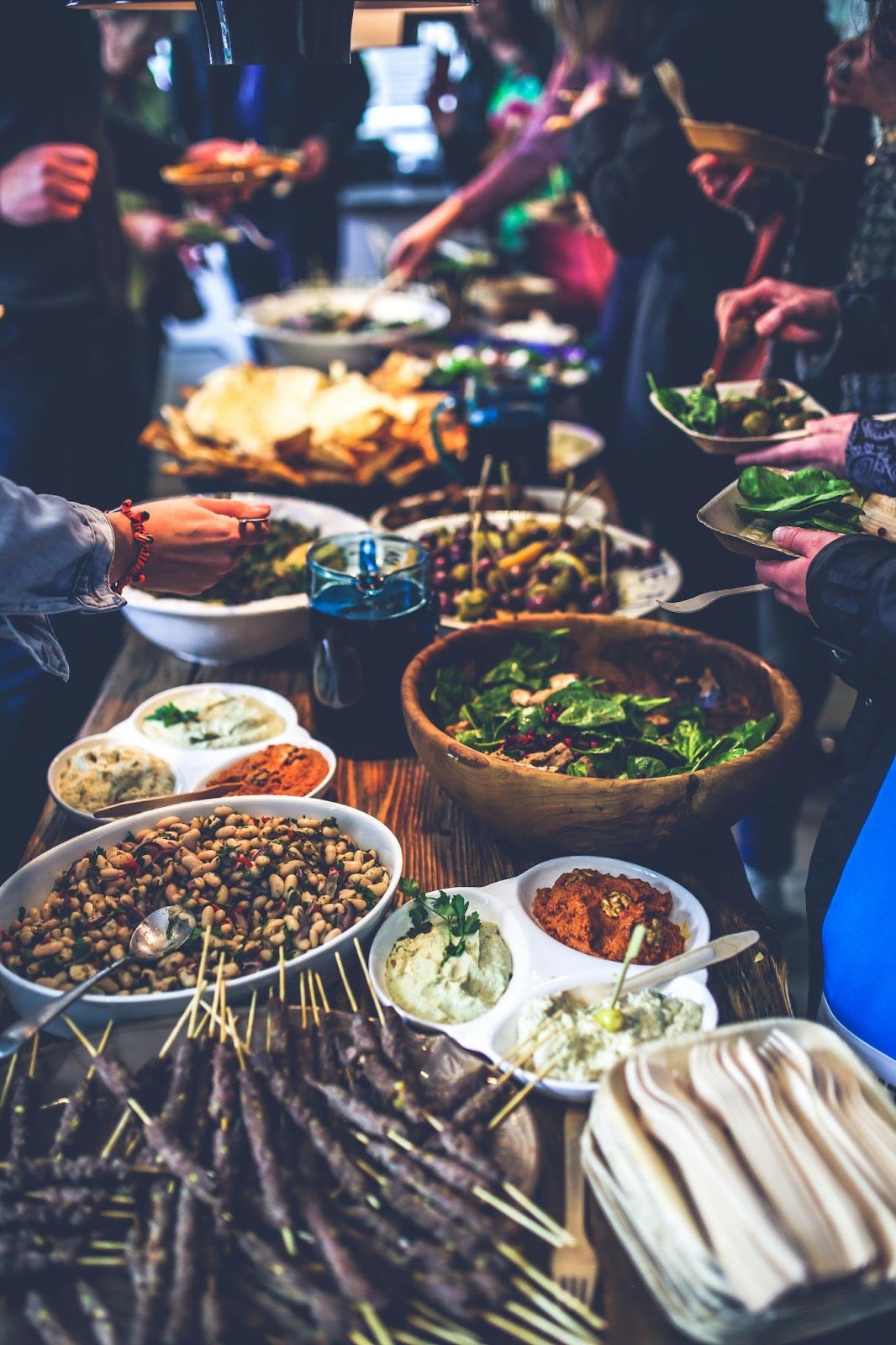
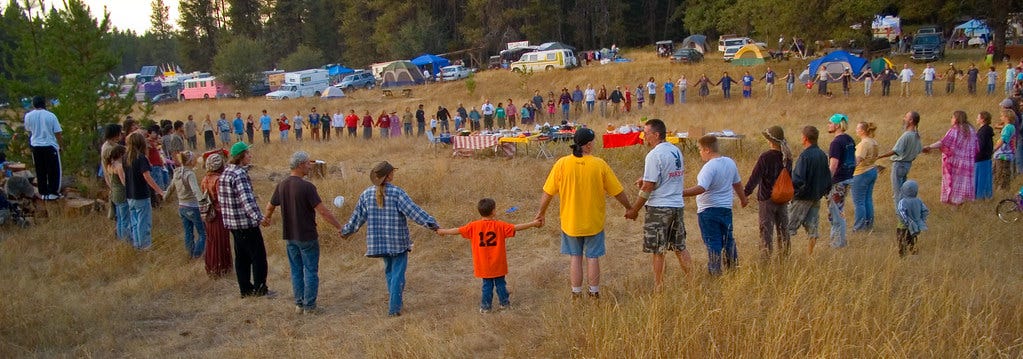

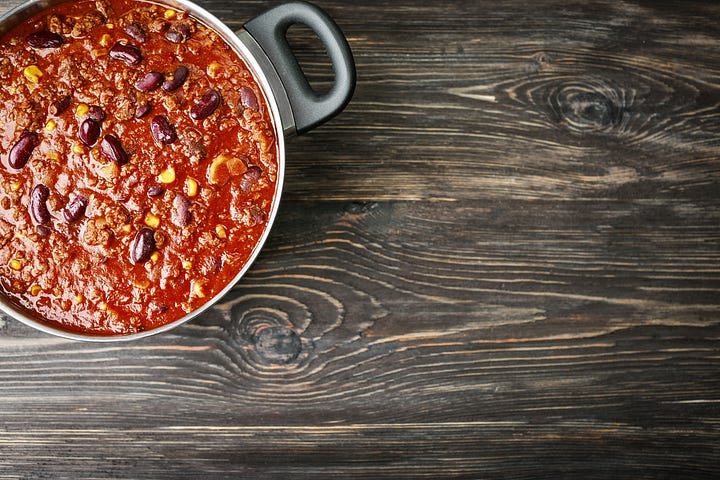

So Pot Luck is one way in which we unite. This is bbbeeeaaauuutttiiifffuuulll.